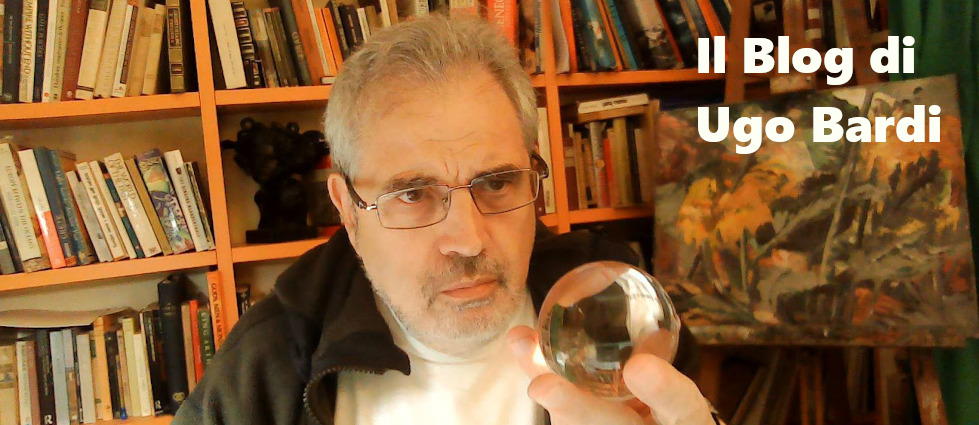Naomi Oreskes e il suo collega Erik Conway discutono la situazione in un articolo su "Nature" intitolato "sconfiggere i mercanti del dubbio". Oreskes, in particolare, ce la ricordiamo come autrice dei primi studi che cercavano di stabilire il concetto di "consenso" sul concetto di cambiamento climatico, cosa che le è valsa insulti e fulminazioni da parte dei negazionisti climatici.
Oreskes e Conway dicono parecchie cose giuste in questo articolo; rifacendo tutta la storia dei vari loschi figuri che hanno operato - per esempio - al soldo della lobby del tabacco per cercare di confondere il pubblico sul legame fra fumo e cancro. Questi stessi loschi figuri stanno adesso lavorando al soldo dell'industria dei combustibili fossili per confondere il pubblico sul legame fra attività umana e riscaldamento globale.
L'opinione di Oreskes e Conway è che dobbiamo smettere di menare il can per l'aia con le sofisticherie che sono tipiche del modo di esprimersi degli scienziati. Dobbiamo dire a chiare lettere che il riscaldamento globale antropogenico è un fatto. Aggiungo io che dobbiamo anche dire che è un pericolo gravissimo per noi e per le generazioni future. Questo non basterà a tacitare i negazionisti climatici, ma sarà perlomeno un passo avanti.
Qui vi posto un pezzetto dell'articolo; non sono sicuro se sia lecito metterlo tutto, purtroppo mi sembra che non sia "free access" sul sito di nature.
__________________________________________________________
Defeating the merchants of doubt
As climate scientists battle climate sceptics, they should note that we have been here before, say Naomi Oreskes and Erik M. Conway. History holds lessons for how researchers can get their message across.
Ever since Charles Keeling began systematic measurements of carbon dioxide levels as part of the 1957–58 International Geophysical Year, scientists have been working to understand the effects of that atmospheric change on our climate. By the late 1970s, a consensus was forming about anthropogenic warming and, in 1992, the UN Framework Convention on Climate Change committed its signatories to preventing dangerous human interference in the climate system. Nearly two decades later, little progress has been made.
Meanwhile, opinion polls have repeatedly shown that large numbers of US citizens — and many in Canada, Australia and some parts of Europe — disbelieve the scientific conclusions. A December 2009 Angus Reid poll found that only 44% of Americans agreed that “global warming is a fact and is mostly caused by emissions from vehicles and industrial facilities”1. There has been essentially no change in public acceptance of the scientific conclusions since the 1980s2, with the public continually muddling the facts — believing, for example, that the ozone hole is the main cause of climate change3.
One reason that the public is confused is that people have been trying to confuse them, in large part by intentionally waging campaigns of doubt against climate science. Doubt-mongering is an old strategy. It works because if people think the science is contentious, they are unlikely to support public policies that rely on that science. As we recount in our new book, Merchants of Doubt4, it is a strategy that has been pursued — often by the same people — to combat the ideas that cigarette smoking causes cancer, that acid rain or the ozone hole is caused by man-made pollution, that the pesticide DDT should have been banned, that the world is warming or, if warming, that we ought to be worried. Yet, despite this long history, scientists are still ill-equipped, and ill-prepared, to deal with doubt-mongering.
From the late 1980s, one of the major sources of sceptical and contrarian claims about global warming was the George C. Marshall Institute, a think tank in Washington DC. The institute was founded in 1984 by Frederick Seitz, a solid-state physicist and one-time president of the National Academy of Sciences, Robert Jastrow, an astrophysicist and head of the Goddard Institute for Space Studies, and William Nierenberg, a nuclear physicist and head of the Scripps Institution of Oceanography. All three were successful, prominent and brilliant. And all three spoke strongly against communism and in favour of free enterprise.
In 1984, the men joined forces to defend then US president Ronald Reagan's Strategic Defense Initiative (popularly known as Star Wars). But just a few years later the supposedly implacable enemy disintegrated before Western eyes.
By this time the three physicists were all over 60 and might have retired, happy in the knowledge that they had helped to win the cold war. Instead, they turned their attention to environmentalists, who some at the time called “watermelons”— green on the outside, 'red' on the inside. Through the institute they began to challenge the scientific evidence of anthropogenic causes of the ozone hole and global warming. Tellingly, as the Marshall Institute was getting going in the early 1980s, Nierenberg chaired a peer-review panel assembled by the Reagan administration that played down the severity of acid rain. And Seitz was working for the tobacco industry. From 1979–85, Seitz directed a programme for the R. J. Reynolds Tobacco Company, funding biomedical research used to defend its products against claims that tobacco was responsible for cancer, heart disease and other illnesses.
The story of tobacco-industry obfuscation has been amply documented5. What is particularly important to understand is how the industry used the trappings of science to make its case. It created the Council for Tobacco Research (originally the Tobacco Industry Research Council, but it dropped 'industry' on advice from a public-relations firm), along with various newsletters, journals and institutes, to publish claims. And it recruited scientists to speak up for this work, because it was obvious that tobacco-industry executives would lack credibility — although often the scientists had little or no expertise in medicine, oncology or epidemiology.
“Scientists should now label anthropogenic warming a fact.”
